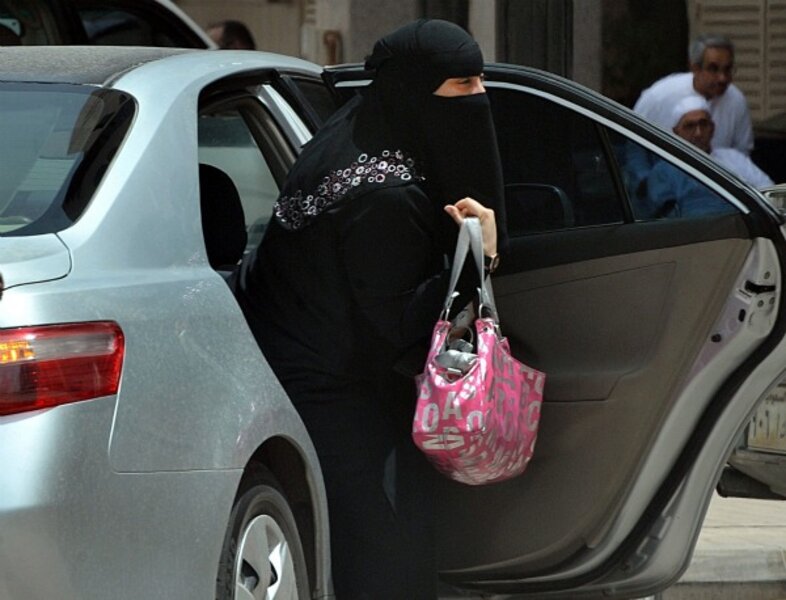Honk if you support Saudi women drivers
Loading...
What struck me about watching a YouTube video of Manal al-Sharif driving along in a Saudi city scene is how normal it looked: The modern Arab woman, wearing her hijab and black sunglasses, looking left before she makes a turn, checking her rear-view mirror, but mostly staring straight ahead as she chats with the woman in the passenger seat who is filming her.
But this simple act is utterly un-normal in Saudi Arabia, where women are banned from driving – not because any law forbids it, but because custom and religious clerics say it's a no-no. With no public transport system, this makes getting to work, or getting the kids to school, or running errands more than a chore.
Ms. al-Sharif, who is a divorced mother and a computer-security consultant, was arrested May 22 after posting a video of herself driving. She was finally released 10 days later, but only after promising not to participate in the "Women2Drive" campaign. The campaign urges women to drive en masse in Saudi Arabia on June 17 to protest the entrenched driving ban.
The campaign is promoting itself through Facebook and Twitter, just as the organizers of the Arab Spring did. But will it galvanize support inside the conservative kingdom, which is the most restrictive Islamic government for women in the world? Women there cannot vote, have no property rights, and make up only 5 percent of the work force?
From behind her steering wheel, al-Sharif makes her case for the right to drive. Not all women can afford a hired driver, she says. And what about the morals of the drivers themselves? Hers got in an accident in the first week she hired him. "He used to harass me," she explained. "He'd adjust [the] rear-view mirror to see what I was wearing." This week, a Saudi businesswoman reported being raped at gunpoint by her chauffeur.
In the video, al-Shariff and her passenger talk about other disadvantages to a driveless life: No taxis available at rush hour; drivers shared by so many women that a 10-minute trip to the office takes two hours; having to stand on the street to wave down a driver. "When I stand by the roadside, everybody, good and bad, will look at me. The good and the bad humiliate me because they don’t like the amount of money that I offer," says al-Sharif. But driving herself, she adds, "There is nobody getting in my way and nobody harassing me, because I am in my own car with the doors locked."
Women's rights advocates in Saudi Arabia have written an open letter to US Secretary of State Hillary Rodham Clinton asking her to publicly support a woman's right to drive, a campaign they describe as the most significant women's rights movement in Saudi Arabia in two decades. "Wikileaks" reveals that US diplomats have made this appeal in private, but to no avail. The group is making a similar appeal to the European Union's top foreign affairs official, Catherine Ashton.
That would be a welcome, supportive step, but perhaps not the "game changing moment" that the letter's authors hope. The June 17 protest is sure to attract stiff opposition inside the kingdom. A counter campaign calls on men to use the cords of their headdresses to whip the women protesters. Not only is there stiff religious opposition to the protest, but many men fear that if women drive, they will take away men's jobs.
What's needed on June 17 is the same as everywhere in the Arab uprising: A massive and ongoing protest. That is what gets the attention of rulers. And in this endeavor, women must bring their male friends and family members who support them.





